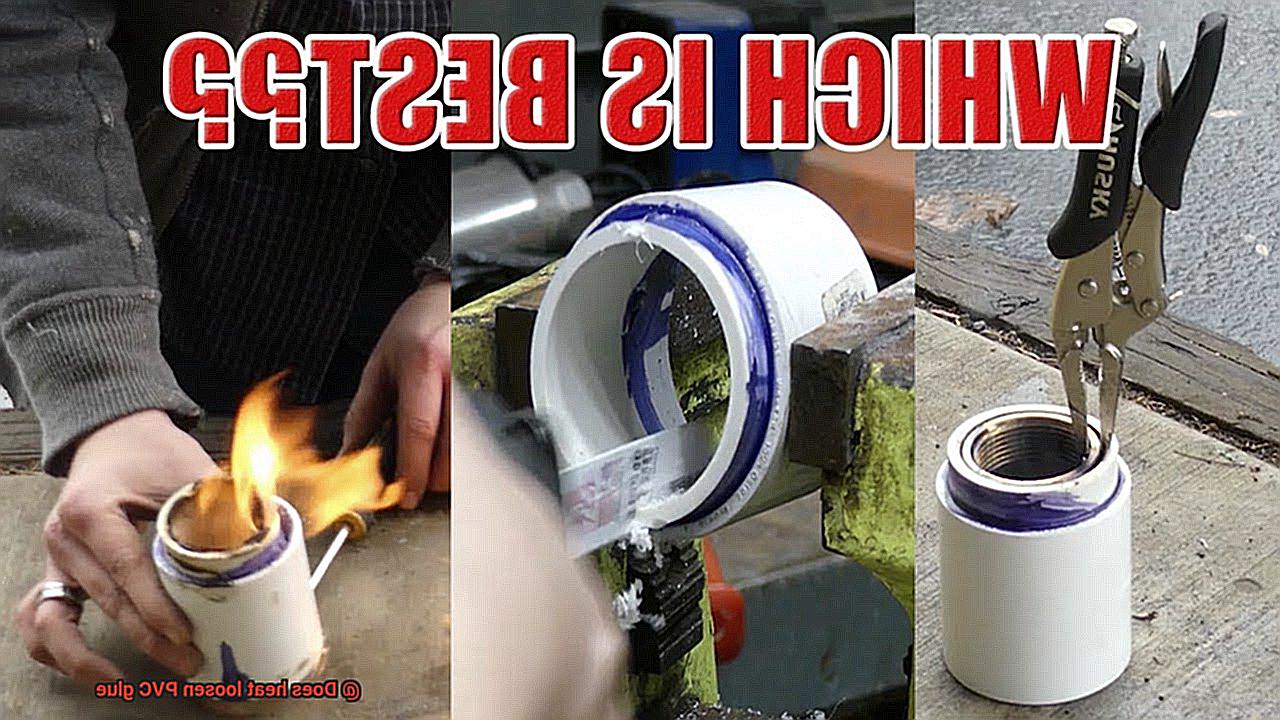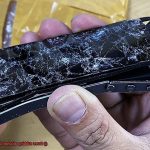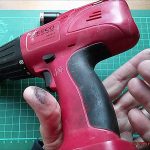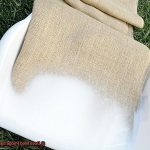Curious about how heat affects PVC glue?
Wondering if it loosens the adhesive magic? Today, we’re delving into the captivating realm of PVC glue and heat.
You know, that trusty solvent cement used to connect PVC pipes and fittings. But what happens when those joints face scorching temperatures?
Does the glue hold its ground or crumble under the heat’s relentless assault? In this post, we’ll dig deep into the effects of heat on PVC glue and unveil the scientific secrets behind its behavior.
So, let’s dive in and uncover the truth about PVC glue and its fiery foe.
Understanding the Properties of PVC Glue
Contents
- 1 Understanding the Properties of PVC Glue
- 2 How Heat Affects the Bond Created by PVC Glue
- 3 Advantages of Using Heat to Loosen PVC Glue
- 4 Disadvantages of Using Heat to Loosen PVC Glue
- 5 Temperature Guidelines for Applying and Loosening PVC Glue
- 6 Preparing the Joint for Heating
- 7 Heating Techniques for Loosening PVC Glue
- 8 Cleaning Up After Heating the Joint
- 9 Conclusion
PVC glue, also known as PVC pipe cement or solvent cement, is a vital adhesive used in plumbing, irrigation, and construction projects to create strong and watertight connections between PVC pipes and fittings. While heat can influence the properties of PVC glue and the strength of its connections, understanding these effects is crucial for achieving reliable and durable results. In this article, we will delve into the impact of heat on PVC glue and explore how it can either strengthen or loosen connections.
The Role of Solvent:

PVC glue contains solvents like tetrahydrofuran (THF) or methyl ethyl ketone (MEK). These solvents work by softening the PVC surfaces, allowing them to bond together. When applied, the solvent penetrates the surface of the PVC pipe or fitting, initiating a chemical reaction that fuses the two pieces together.
Effects of Excessive Heat:
Excessive heat can accelerate the evaporation of solvents in PVC glue, making it harder for the PVC surfaces to bond effectively. This means that if applied in high temperatures, the glue may not create a strong connection. It is important to adhere to the manufacturer’s instructions regarding temperature limitations to ensure proper bonding.
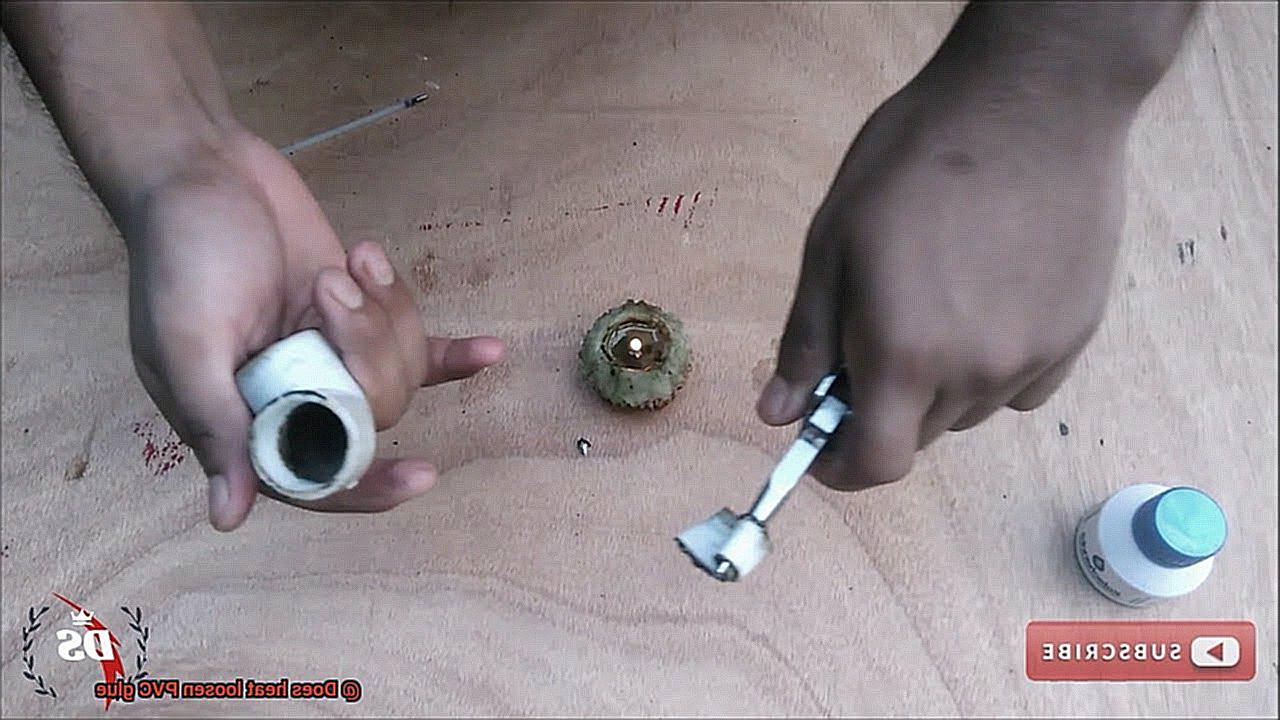
Extreme Heat and PVC Pipe Integrity:
While normal operating temperatures in plumbing systems do not typically affect PVC glue connections, extreme heat can indirectly impact their integrity. High temperatures can cause PVC pipes to warp or deform, exerting stress on glued joints. Over time, this stress can lead to leaks or failures. It is essential to avoid exposing PVC pipes to extreme heat to maintain the strength of PVC glue connections.
Application Challenges:
Excessive heat can also thicken and reduce the fluidity of PVC glue due to rapid solvent evaporation. This makes it more difficult to apply the glue evenly, potentially compromising its effectiveness. It is important to carefully follow the manufacturer’s guidelines for cleaning, surface preparation, glue application, and curing time to achieve optimal results.
Using Heat to Loosen Connections:
On the other hand, heat can be used to loosen PVC glue connections when necessary. By applying controlled heat using devices like heat guns or hairdryers, the adhesive softens, allowing for easier disassembly of PVC parts. However, caution must be exercised to prevent damage to the PVC material itself.
Conclusion:
Heat can both positively and negatively affect the properties of PVC glue and the strength of its connections. While excessive heat during initial application can prevent proper bonding, extreme heat can indirectly impact PVC glue connections by distorting PVC pipes. However, under normal operating conditions, properly applied PVC glue connections should not be significantly loosened or weakened by heat. By understanding the impact of heat and following manufacturer guidelines, reliable and durable connections can be achieved using PVC glue.
How Heat Affects the Bond Created by PVC Glue
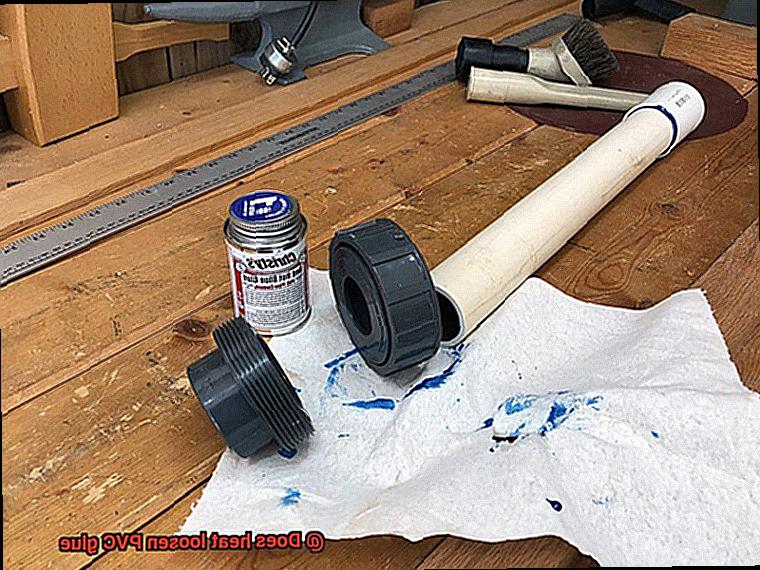
PVC glue, also known as PVC solvent cement or PVC adhesive, is the go-to adhesive for joining PVC pipes and fittings together. It creates a bond that is strong and durable, ensuring a leak-free plumbing system. However, this superhero adhesive has its kryptonite – heat.
When exposed to heat, the chemical properties of PVC glue can change, leading to potential weakening or loosening of the bond. The temperature at which this occurs depends on the specific type of PVC glue being used. Different brands and formulations have different temperature tolerances, so it’s important to refer to the manufacturer’s instructions or consult with an expert to determine the heat resistance of a particular PVC glue.
Generally, PVC glues are designed to withstand normal operating temperatures in plumbing systems. This means they should be able to endure the hot water flowing through PVC pipes without any significant loss of bond strength. However, excessive heat can pose a risk to the integrity of the bond. If the glue is exposed to temperatures beyond its tolerance limits, it may soften or melt, leading to a weak or failed bond.
It’s important to note that heat not only affects the PVC glue but also the PVC material being bonded. Excessive heat can cause thermal expansion of the PVC pipe, which puts additional stress on the glue joint. Over time, this can lead to cracks or leaks.
In applications where high temperatures are expected, such as hot water pipes or external environments with intense sunlight exposure, it is advisable to use PVC glues specifically formulated for higher temperature resistance. These specialized glues are designed to maintain their bond strength even under more challenging conditions.
When disassembling PVC joints that have been bonded with PVC glue, heat can be used as a method to soften the glue and facilitate separation. Controlled heat from a heat gun or blow dryer can help loosen the bond, making it easier to remove the pipes or fittings without causing significant damage. However, caution must be exercised to prevent excessive heat that can damage the PVC material itself.
To ensure optimal bond strength and durability, it is crucial to follow proper installation procedures when working with PVC glues. This includes cleaning and preparing the surfaces to be bonded, applying an even coat of glue, and allowing sufficient curing time as per the manufacturer’s instructions.
Advantages of Using Heat to Loosen PVC Glue
Using heat to loosen PVC glue offers numerous advantages that make it an effective and efficient method for adhesive removal. Let’s explore these advantages in detail to understand why heat is the go-to solution for tackling stubborn PVC glue.
First and foremost, heat provides a quick and efficient way to soften the adhesive. By applying heat to the glued joint, the adhesive loosens its grip, making it easy to break apart. This saves valuable time and effort, eliminating the need for prolonged struggle and frustration.
Not only does heat expedite the removal process, but it also minimizes damage to surfaces. Unlike other methods that require scraping or prying, heat allows the glue to release its hold without harming the underlying materials. This is especially beneficial when working with delicate or sensitive surfaces that are prone to scratches or dents.
In addition to its efficiency and surface-friendly nature, using heat is a cost-effective solution. There’s no need to invest in specialized solvents or tools. A simple hairdryer or heat gun can do the trick, making it a budget-friendly option that won’t break the bank.
Versatility is another advantage of using heat for PVC glue removal. Whether you’re dealing with plumbing joints, electrical conduits, or any other PVC applications, heat can handle it all. It acts as a Swiss Army knife for glue removal, offering a versatile and effective solution for various adhesive challenges.
When it comes to safety considerations, heat-based methods are a safer alternative compared to solvent-based solutions. You don’t have to worry about handling harsh chemicals or potential health hazards. Just apply some heat and breathe easy, knowing that you’re using a safe and effective technique.
Last but not least, using heat allows for reusability. By softening the adhesive, you have the potential to salvage and reuse the components or materials being separated. This not only saves money but also reduces waste, making it an environmentally-friendly option.
Disadvantages of Using Heat to Loosen PVC Glue
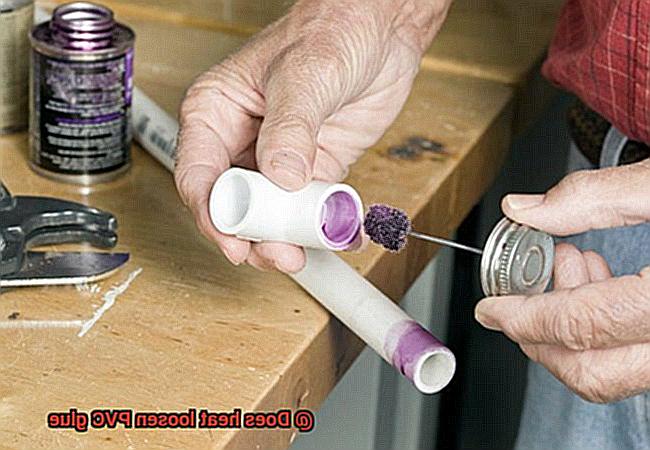
When faced with the task of loosening PVC glue, using heat may appear to be an attractive option. However, it is crucial to understand the potential disadvantages and risks associated with this method before proceeding.
In this comprehensive analysis, we will delve into the drawbacks of using heat to loosen PVC glue and explore why it may not always be the most optimal choice.
Damage to the PVC pipe:
Perhaps the most significant drawback of applying heat to PVC glue is the risk of damaging the pipe itself. PVC pipes are highly sensitive to heat, and subjecting them to excessive temperatures can result in warping, melting, or even fire hazards. Repairing or replacing a damaged pipe can be a costly and time-consuming endeavor, making it essential to exercise caution when using heat as a means of loosening PVC glue.
Difficulty in temperature control:
Achieving precise temperature control when using heat to loosen PVC glue can be quite challenging. If the temperature is too high, it can lead to excessive melting of the glue and potential damage to the pipe. Conversely, if the temperature is too low, it may not effectively loosen the glue, necessitating additional heat or alternative removal methods. Striking the right balance is crucial but can prove to be a daunting task.
Potential health risks:
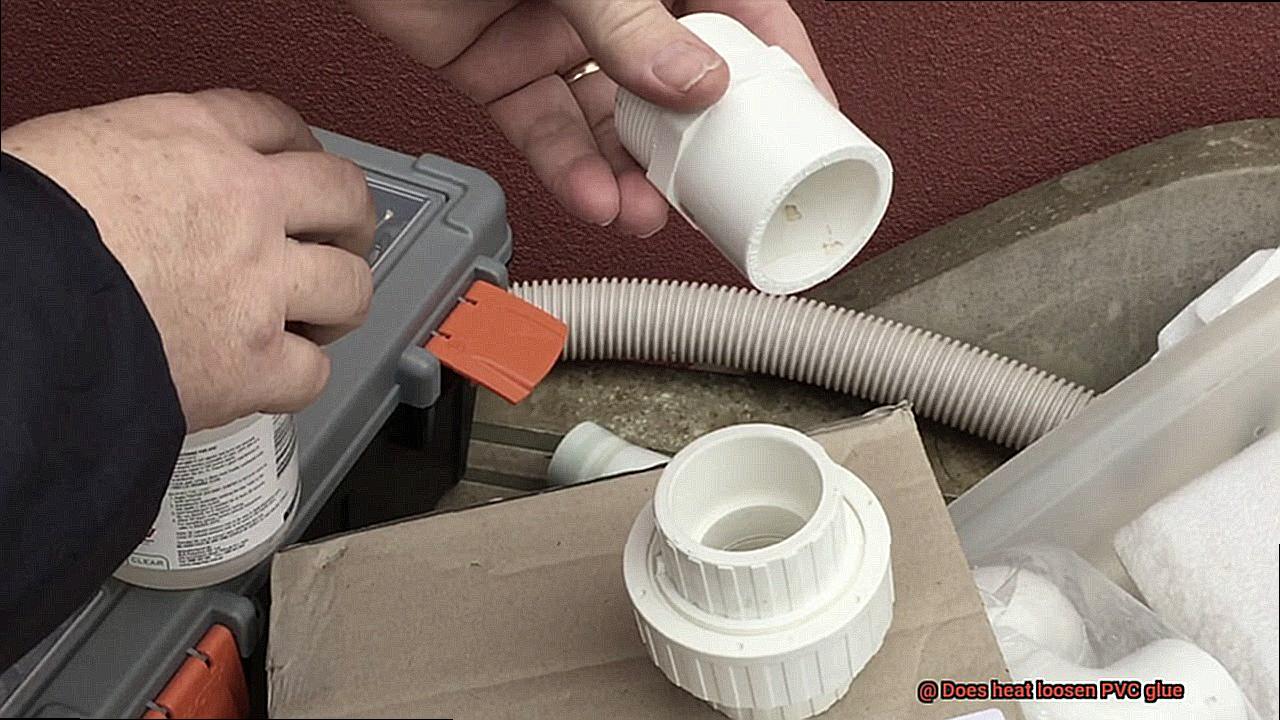
Using heat on PVC glue can release toxic fumes that pose significant health risks if inhaled. These fumes can cause respiratory issues and other ailments. To mitigate this risk, it is imperative to work in a well-ventilated area and utilize appropriate protective gear such as respirators. Neglecting these precautions can have severe consequences for personal well-being.
Time-consuming process:
Applying heat to loosen PVC glue can be an arduous and time-consuming process. It often requires extended periods of heating the affected area until the glue softens sufficiently for removal. Additionally, allowing the pipe to cool down after heating is necessary before proceeding with any repairs or reassembly. This time investment must be taken into account when deciding on the most efficient removal method.
Limited effectiveness on old or cured glue:
Heat may not be as effective in loosening old or fully cured PVC glue. Over time, the glue can harden and become more resistant to heat-based removal methods. In such cases, alternative techniques like mechanical scraping or the use of chemical solvents may be required, further complicating and elongating the glue removal process.
Temperature Guidelines for Applying and Loosening PVC Glue
PVC glue, also known as solvent cement, is a versatile adhesive that is widely used for joining PVC pipes and fittings. However, achieving a strong bond requires careful consideration of temperature guidelines.
Here, we will explore the temperature parameters for applying and loosening PVC glue, ensuring successful connections and efficient removal when necessary.
When it comes to applying PVC glue, the temperature range is crucial. Typically, the recommended range is between 40°F (4°C) and 110°F (43°C). This ensures proper curing of the glue and results in a secure bond. It’s important to note that not only the ambient temperature but also the temperature of the PVC surfaces themselves play a significant role.
In colder temperatures, warming up the PVC surfaces is essential before applying the glue. This can be achieved using a heat gun or hot water. By warming up the surfaces, the adhesive properties of the glue are enhanced, ensuring a stronger bond. On the other hand, in hotter temperatures, it is advisable to cool down the PVC surfaces. This can be done by using a damp cloth or applying cold water. Cooling down the surfaces slows down the curing process, allowing for more time to align and adjust before the glue sets.
Extreme temperatures can have adverse effects on not only the glue but also on the PVC pipes and fittings themselves. High temperatures can cause warping or distortion, while low temperatures can make the material brittle and prone to cracking. Therefore, it is crucial to work within the recommended temperature range to ensure optimal results.
Now let’s discuss the process of loosening PVC glue. Heat can be utilized to soften the adhesive and separate bonded parts. However, caution must be exercised as excessive heat can damage the PVC material. To loosen PVC glue, a heat gun or hairdryer can be used to direct heat onto the joint. It is crucial to apply heat evenly and avoid overheating any specific area. Once the glue has softened, gentle twisting or pulling action can be applied to separate the bonded parts.
While heat is a common method for loosening PVC glue, it is important to be aware of its drawbacks and risks. Achieving precise temperature control can be challenging, and excess heat can harm the delicate PVC pipes.
Moreover, toxic fumes are released during the process, posing health hazards that should not be taken lightly. If heat alone is not sufficient to loosen the glue, a solvent specifically designed for removing PVC glue can be used. These solvents effectively dissolve the bond between the adhesive and the PVC material.
When using PVC glue solvents, it is crucial to carefully follow the manufacturer’s instructions as they may vary depending on the product. Additionally, proper ventilation should be ensured by working in a well-ventilated area.
Preparing the Joint for Heating
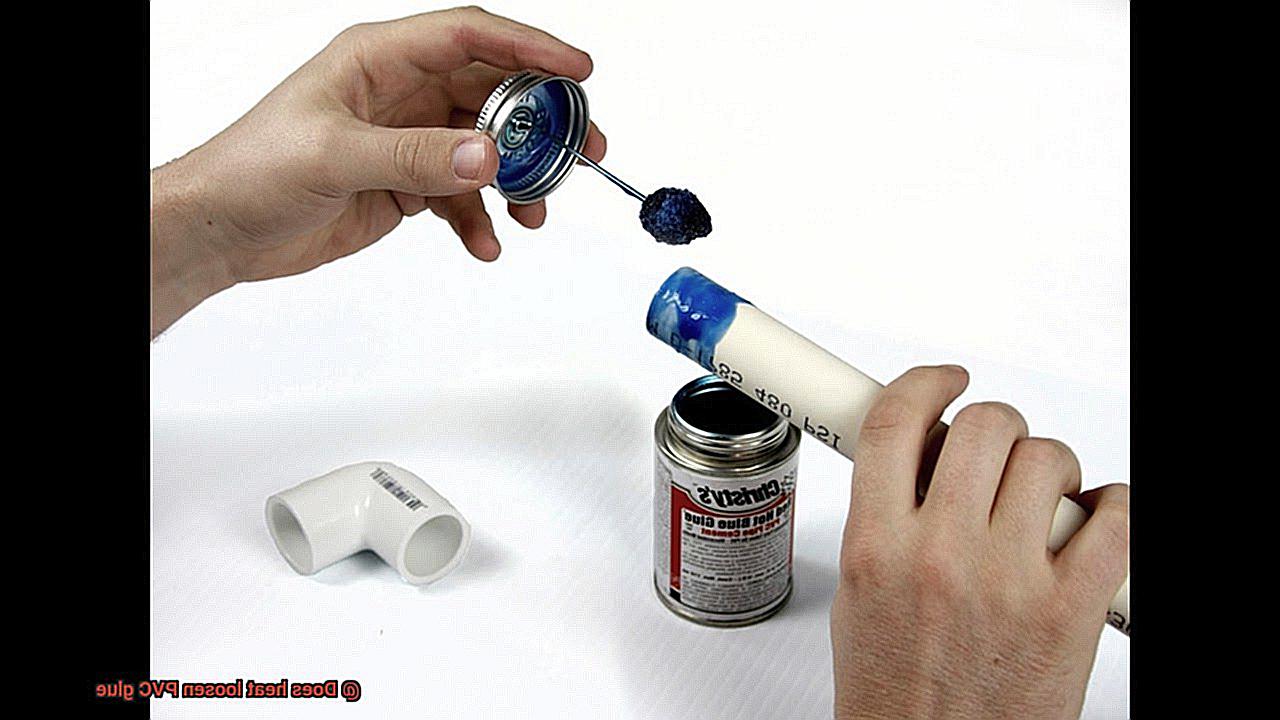
Preparing the Joint for Heating is a critical step in the process of loosening PVC glue. To ensure success, it is essential to follow these steps and guidelines to properly prepare the joint for heating.
- Cleanliness is Key: Begin by removing any dirt or debris from the joint using a clean cloth or paper towel. A pristine surface is crucial for optimal results.
- Roughen Up the Surface: Lightly sand the joint with fine-grit sandpaper. This creates a rough texture on the PVC, allowing the heat to work its magic more effectively.
- Optional Primer Application: For an extra boost in loosening the glue, consider applying a thin layer of primer to both the pipe and fitting. The primer acts as a solvent, softening the glue and making it more responsive to heat.
- Choose Your Heat Source: You have options. The most common method is using a heat gun, which directs hot air onto the joint like a superhero. However, if you’re feeling adventurous, you can also use a propane torch. Just remember to exercise caution and avoid overheating the PVC.
- Apply Heat Strategically: Once you’ve chosen your heat source, evenly apply heat to the joint. Keep the heat moving constantly and avoid focusing on one spot for too long. We want to avoid any scorched or melted disasters.
- Test for Flexibility: After heating the joint for a suitable amount of time, gently twist or separate the pipe and fitting to check its flexibility. If the glue has sufficiently loosened, you should be able to maneuver the joint with ease. If not, continue applying heat while being mindful of not overheating the PVC.
- Clean Up Residual Adhesive: Once the glue has loosened enough, clean any remaining adhesive using a suitable solvent or PVC cleaner. This ensures that the joint is squeaky clean and ready for reassembly or modifications.
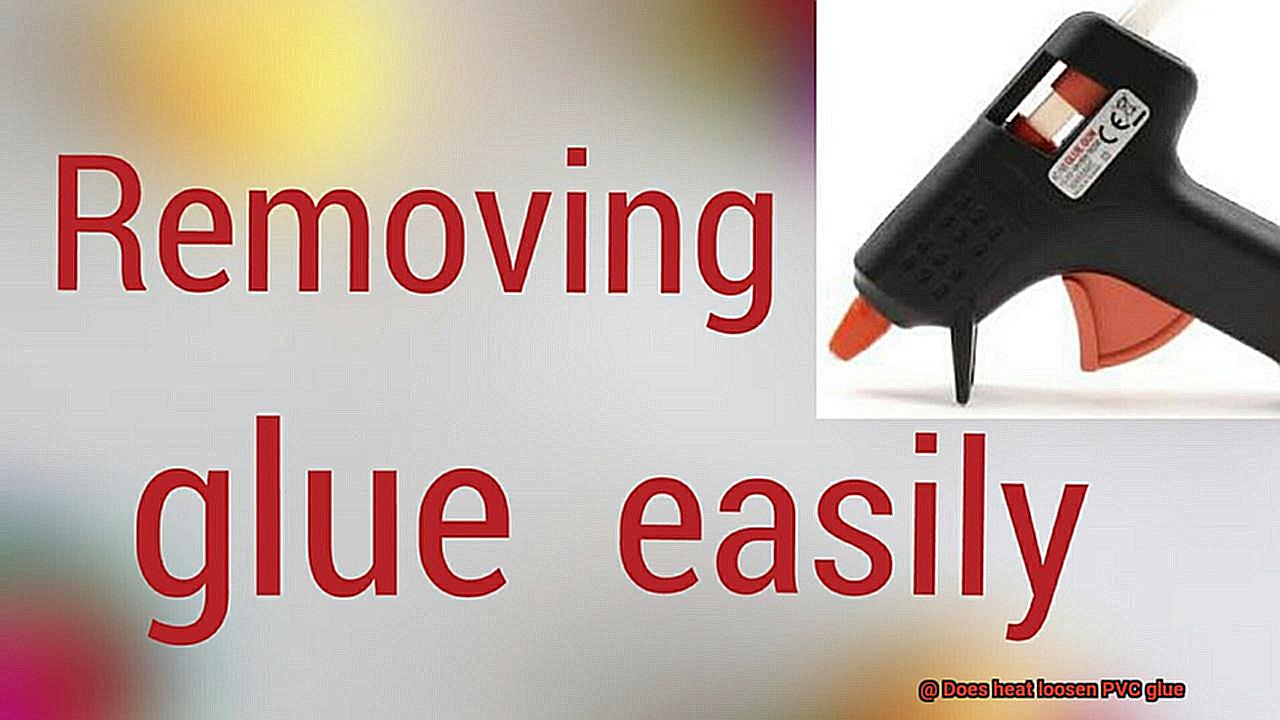
Always prioritize safety. Wear protective gloves and eyewear when working with heat sources to prevent burns or eye injuries.
Heating Techniques for Loosening PVC Glue
Don’t let PVC glue hold you back from disassembling or modifying your plumbing or DIY projects. Fear not, for there is a superhero solution – heating techniques. In this article, we delve into the realm of heat and explore various methods that will loosen PVC glue, making your life a whole lot easier.
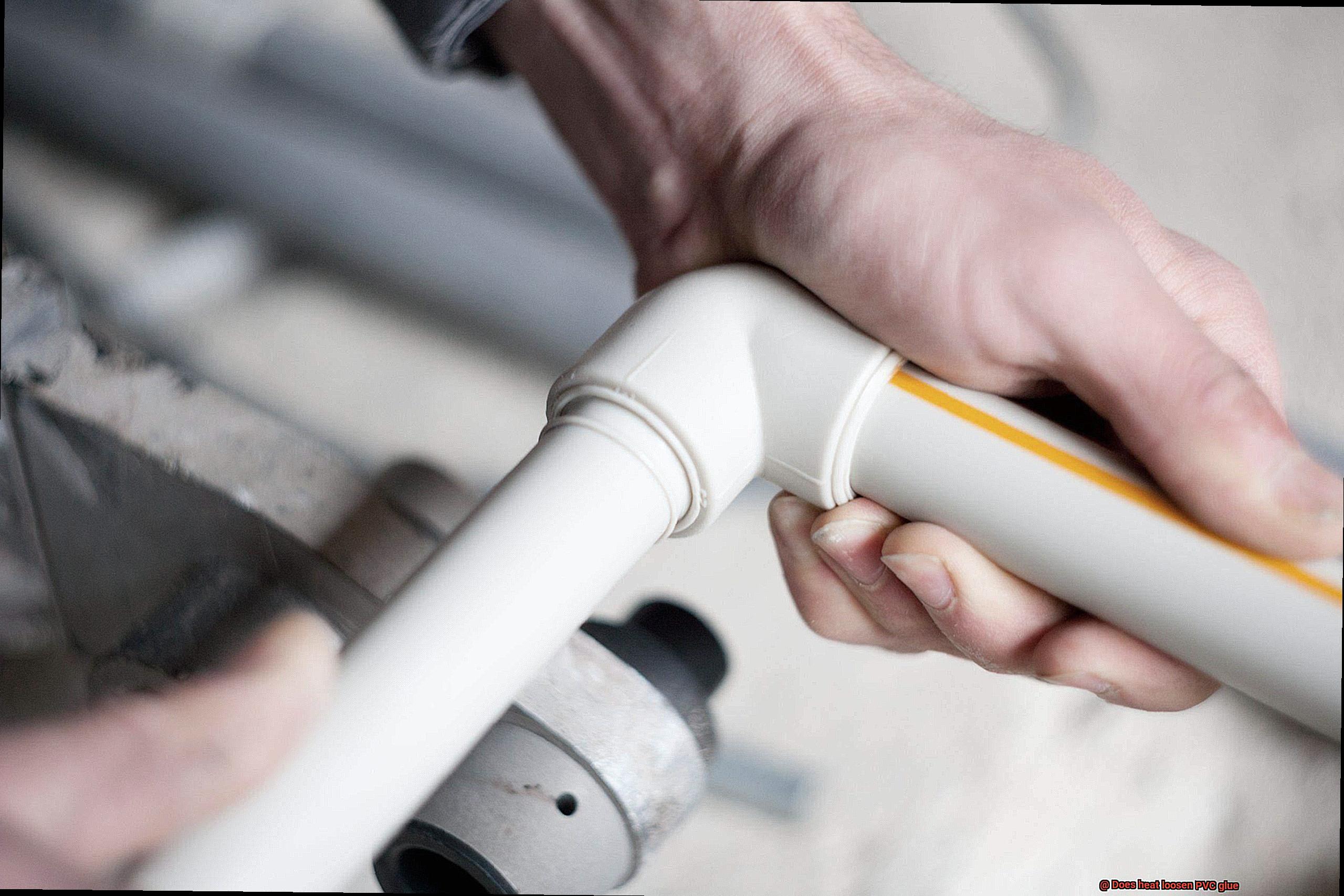
Heat Gun: The Ultimate Sidekick
Behold the mighty heat gun, a powerful tool that unleashes a torrent of hot air at blistering temperatures. Direct its power towards the glued area and watch as the PVC glue quivers under its might. But beware, my friend, for too much heat can lead to disaster. Keep that heat gun moving to prevent the PVC from melting or warping.
Hairdryer: A Trusty Companion
Though not as formidable as a heat gun, a hairdryer can still wield enough heat to soften PVC glue. Like a skilled swordsman, move the hairdryer constantly, swaying it to and fro, heating the stubborn glue without scarring the delicate PVC material.
Boiling Water: The Classic Solution
Ah, the timeless remedy of boiling water. Submerge the glued joint into its bubbling depths and witness the magic unfold before your eyes. The heat wraps around the adhesive like a loving embrace, softening it with each passing moment. But heed this warning: like a raging tempest, boiling water can scorch and burn. Treat it with respect and handle with care.
Hot Towel or Cloth: The Gentle Approach
For those who prefer a more cautious strategy, a hot towel or cloth can be your ally. Dip it into hot water until it’s saturated with warmth, then wrap it tenderly around the glued joint. Allow time for the heat to seep through the layers of adhesive, gently coaxing the PVC glue to let go of its firm grip.
Remember: Safety First.
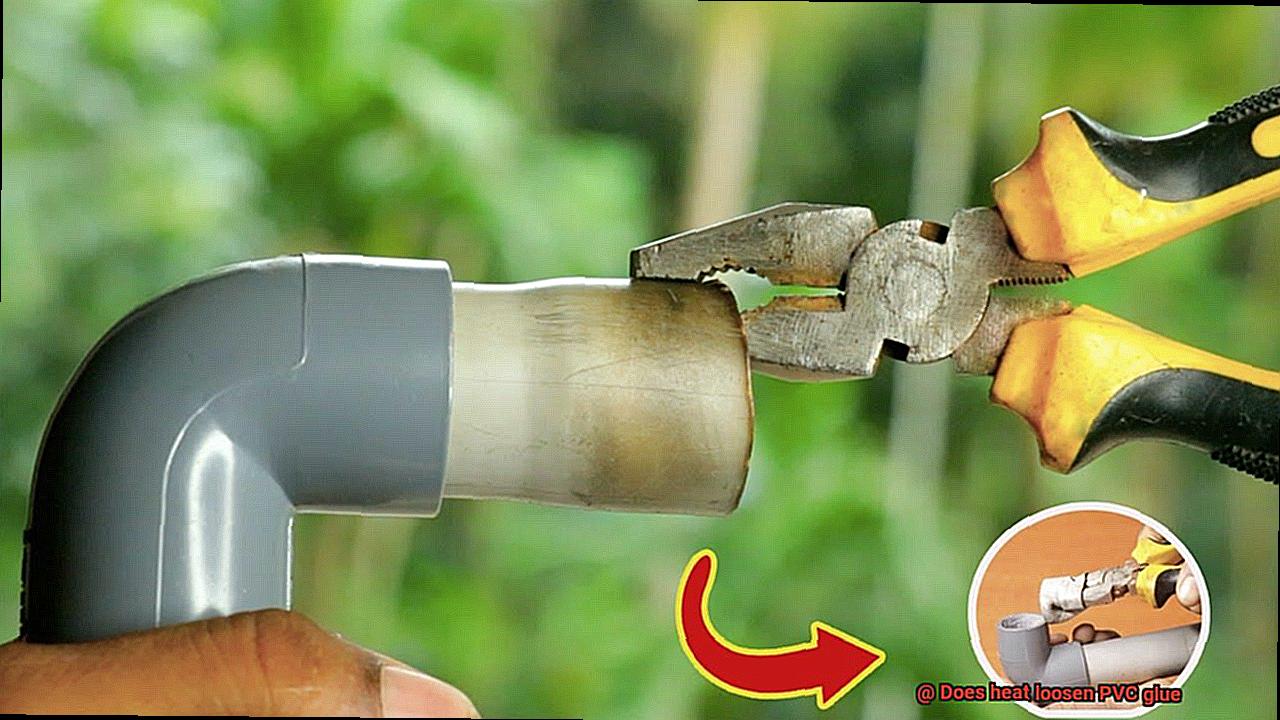
Before embarking on your quest for freedom from PVC glue, armor yourself with protective gloves and goggles. Seek refuge in a well-ventilated area, away from the suffocating fumes of battle. And remember, my friend, to avoid overheating the PVC material or damaging the surrounding surfaces. A true warrior knows the value of caution.
Cleaning Up After Heating the Joint
But now comes the not-so-fun part – cleaning up the residue left behind. Don’t worry though, we’ve got you covered with some tried and true methods for getting your joint spotless again.
First things first, make sure your joint has completely cooled down. We don’t want any accidental burns here. Once it’s safe to touch, let’s dive into the cleaning process.
The go-to option for cleaning up after heating a PVC joint is using a solvent. These magical chemicals dissolve the glue, making it a breeze to remove. You’ve got a few options in this department:
- Acetone: This little gem can be found at most hardware stores and won’t break the bank. Simply apply it to a cloth or rag and wipe away the glue residue. Just remember to wear gloves and work in a well-ventilated area for safety.
- Methyl ethyl ketone (MEK): Stronger than acetone, MEK packs a punch when it comes to dissolving PVC glue. However, it’s also more hazardous to work with, so be sure to follow all safety instructions and guidelines when using it.
- PVC pipe cleaner: This specialized solvent is specifically designed for cleaning up PVC glue. You can find it at most plumbing supply stores, and it works like a charm. Just follow the instructions on the bottle carefully for optimal results.
If solvents aren’t your thing or you’d like to try an alternative method, fear not. There are other options available.
One such method is using a scraper or putty knife to carefully scrape away the glue residue. This requires a gentle touch and patience to avoid damaging the PVC pipe.
Another option is sanding away the residue with sandpaper or an abrasive pad. This method is particularly effective for stubborn remnants, but be sure to use a fine-grit sandpaper and go easy to avoid scratching the PVC.
Once the residue is gone, give the joint a thorough rinse with water to remove any remaining traces. This step ensures that your joint is squeaky clean and ready for reassembly.
Now, before you call it a day, remember to dispose of any solvents or cleaning materials properly. Most solvents are considered hazardous waste and need to be disposed of according to local regulations. Let’s be responsible and take care of our environment.
UPzUBxvB8jo” >
Also Read: How to Make Glue Dry Faster
Conclusion
In conclusion, heat can indeed loosen PVC glue.
When exposed to high temperatures, the adhesive properties of PVC glue can weaken, causing the bond between two PVC surfaces to become less secure. This is especially true for glues that are not specifically designed to withstand heat.
So, if you’re working with PVC and need to disassemble or modify your project, applying heat strategically can be an effective method.

